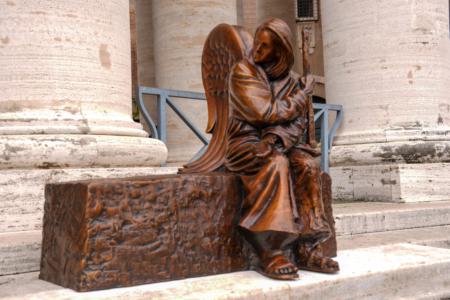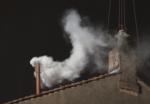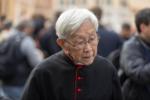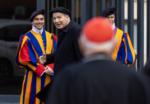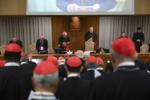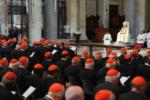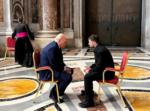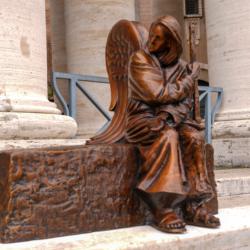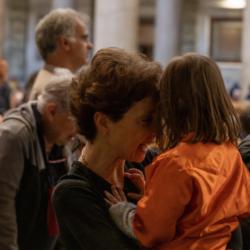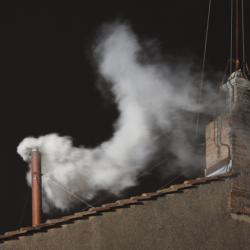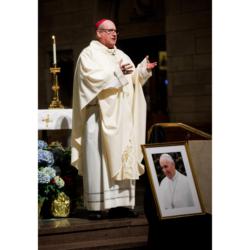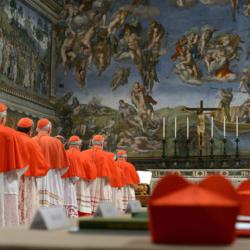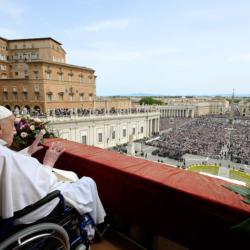'Casey at the Bat' and Worcester
Expect a big resurgence of interest in the poem, "Casey at the Bat," this baseball season.
The great ballad of a star-crossed slugger has never gone completely out of style, but baseball is coming to Worcester this season and that just happens to be the hometown of "Casey's" author and the place where he wrote it 133 years ago. That's old news to folks from Worcester and environs but not to the rest of the country. And the story of how "Casey at the Bat" was written and how it became such an iconic piece of Americana is a great one.
Ernest Thayer, called "Phin" by his friends, was from a well-to-do Worcester family that owned and operated woolen mills. He attended Harvard College, where he was an editor and writer for its humor magazine, The Harvard Lampoon. One of his pals was Will Hearst, the Lampoon's business manager.
Thayer graduated with the class of 1885, but Hearst was invited (no, "told" is a better choice of words) to leave school by university officials at the end of his junior year. Will returned to his native California, where his father put him in charge of the family's recently acquired newspaper, The San Francisco Examiner.
After graduating magna cum laude, Thayer was invited out to California by his old college buddy, who was by then well-known in the newspaper business and beyond by his full name, William Randolph Hearst, to write humorous pieces for the Examiner. Thayer forsook his native Worcester and headed west, much to the consternation of his father who had expected him to join the family business. Beginning in 1886, he contributed pieces to the paper, at first with no byline and later under the name of Phin, his nickname back in his Harvard days.
Thayer, after a year or so, became ill and was forced to return to Worcester, but he continued for a while to write pieces for the Examiner -- from his home 3,000 miles from San Francisco. On Sunday, June 3, 1888, a final piece by Thayer appeared on page four of the Examiner. It was "Casey at the Bat," and it was signed simply, "Phin."
What happened next, you ask? The answer is, absolutely nothing.
The piece made no particular impact, except perhaps with the fishermen who used that day's paper to wrap their catch of the day from San Francisco Bay in it.
That would have been the end of it except for the fact that several months later the producer of a comic opera then running at Wallach's Theatre, located at 30th Street and Broadway in New York City, in an attempt to draw attention to his show, invited all the players from the New York Giants and the visiting Chicago White Stockings to come and see it. A young actor named DeWolf Hopper, who was a featured performer in the show, wondered if there was a piece of special material he might use on the night when the ballplayers were in the audience. A friend of his, a well-known author of the day named Archibald Gunter, pulled from his wallet a tattered clipping he had cut from a newspaper during a visit to California some months earlier. It was "Casey at the Bat," and Hopper decided to commit it to memory.
On the night the players were in the theatre, Hopper stepped forward and, in a deep baritone voice, went into his recitation. In his memoir, "Once a Clown, Always a Clown," he recalled that he felt he was on to something special when, with the count two strikes on Casey, he noticed a nervous twitch in the moustache of the Giants' catcher, Buck Ewing. When Hopper reached the poem's dramatic conclusion, he was stunned when the audience rose to its feet in a show-stopping ovation.
Hopper knew immediately that he had found a signature bit, and he recited "Casey" at every public appearance he made for the rest of his life, or until his death 47 years later in 1935.
Word quickly spread through New York that something special was happening every night at Wallach's Theatre; lines formed at the box office, newspapers, first in the city and then around the country, reprinted "Casey at the Bat," and DeWolf Hopper became a nationally known star.
But there was a mystery surrounding the great comic ballad; no one knew who the author was. Who was the elusive "Phin?"
Thayer, a shy, retiring type who had given up writing to run one of his father's woolen mills, and who had never held a very high opinion of "Casey" to begin with, chose not to come forward. In his absence there was no lack of pretenders to the throne, including King Kelly, a great ballplayer of the day and an even greater self-promoter, who claimed to have been the inspiration for the poem.
William Randoph Hearst, of course, knew that the author was his old classmate, but nobody ever thought to ask him.
The mystery was eventually solved when DeWolf Hopper, by then a major star because of "Casey," made an appearance in Worcester, probably at Mechanics Hall, renowned then and now for its magnificent acoustics. He received a note backstage inviting him to meet the poem's real author. Thayer had been lured out for the evening by a group of his friends and the man who wrote "Casey at the Bat" and the man who made it famous finally met. To commemorate the occasion, Thayer was convinced to recite his poem for Hopper, who later judged it to be the worst recitation of it he ever heard.
Ernest Thayer regarded his outing as the author of "Casey at the Bat" as a great curse; he valued his privacy and lost it when his authorship became known. He retired from the woolen mill business in 1913 and moved to Santa Barbara, California, where he was able to recapture his anonymity. DeWolf Hopper, on the other hand, gloried in his association with "Casey." He has faded from memory since his death 86 years ago (Thayer died in 1940), but the poem for which both men were known lives on as part of America's culture.
And it all began in Worcester, Massachusetts.
- Dick Flavin is a New York Times bestselling author; the Boston Red Sox "Poet Laureate" and The Pilot's recently minted Sports' columnist.
